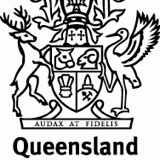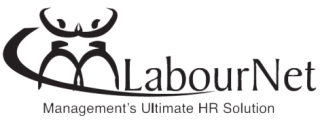Information
-
Document No.
-
Annual OH&S Inspection
-
Client / Site
-
Conducted on
-
Prepared by the Wide Bay OH&S Unit
-
Location
-
Personnel
1. Previous Audit
-
1.1 Is there a previous audit?
-
1.1.1 Has previous audit been reviewed
-
1.1.2 Are there any outstanding issues/actions?
-
Add media
2. Management of OH&S
-
2.1 Is the OH&S policy on display and signed by the CEO?
-
2.2 Do staff have access to current OH&S information/procedures in the work area?
-
2.3 Are staff aware of Queensland Health's OH&S Policy and their responsibilities for OH&S?
-
2.4 Are OH&S training needs for staff identified through a training needs analysis?
-
2.5 Are staff released for mandatory training?<br>
-
2.6 Are staff consulted about OH&S?
-
2.7 Are staff aware of the identity and contact arrangements for their Health and Safety Representative and OH&S Officer?
-
2.8 Do staff understand when, how and what type of incidents should be reported?
-
2.9 Are workplace incident forms available?
-
2.10 Is there evidence of hazards being identified and reported in the work area by staff?
-
2.11 Are the minutes from the OH&S Committee meeting available to staff?
-
2.12 Have staff been trained in emergency plans relevant to the work area?
-
Notes
-
Add media
3. Occupational Violence
-
3.1 Is there a system of work to identify patients who have a past history of aggressive behaviour?
-
3.2 Have staff attended local induction/orientation?<br>
-
3.3 Are patient/client aggression incidents towards staff reported to the Line Manager and recorded (eg IMS/Prime), monitored and reviewed appropriately?<br>
-
3.4 Are staff aware of the code black protocols for the work area?<br>
-
3.5 Has an Occupational Violence Risk Assessment (OVRA) been conducted to identify and manage the risk of occupational violence?<br>
-
3.6 Is information and training provided to staff at the respective training level on Occupational Violence issues? <br>
-
3.7 Are incidents resulting from patient/client aggression investigated?<br>
-
Notes
-
Add media
4. Muculoskeletal Disorder Prevention and Manual Handling
-
4.1 Do the worker/s sampled have a basic awareness of:<br>1. What is a MSD;<br>2. What activities could cause a MSD;<br>3. What to do if they have a MSD (at work)?<br>
-
4.2 Where workers use a computer more than two thirds of the day (66%) while they are at work, have workers completed a Computer Workstation Self Assessment Checklist on their workstation in the last 12 months?<br>
-
4.3 Have all new starters since June 2010 completed the Healthcare Ergonomics Mandatory Training module ‘Introduction to the Prevention and Management of Musculoskeletal Disorders’ within 6 weeks of commencement?<br>
-
4.4 Is there documented evidence of activities to provide workers with appropriate information, training and supervision for manual handling tasks (not patient handling)?<br>
-
Notes
-
Add media
5. Fire Safety
-
5.1 Are evacuation routes clear of obstructions?<br>
-
5.2 Are the fire/smoke doors unobstructed and undamaged?<br>
-
5.3 Are the evacuation signs / diagrams securely fastened and orientated?<br>
-
5.4 Are evacuation plans current and are staff aware of their contents?
-
5.5 Was their a trained fire warden on site during the audit?
-
5.6 Are the exit signs / emergency lighting undamaged?<br>
-
5.7 Have all fire extinguisher and hose reel service tags been stamped within the last six months?<br>
-
5.8 Is fire safety housekeeping acceptable in work unit / public areas which adjoin the work unit?<br>
-
5.9 Have general evacuation instructions been given, are records of instruction kept and available upon request?<br>
-
5.10 Have first-response evacuation instructions been given, are records of instruction kept and available upon request?<br>
-
5.11 Have evacuation coordination instructions been given to the Wardens?<br>
-
5.12 Has a District Fire Safety Coordinator been appointed for the District?<br>
-
5.13 Are all fires immediately reported to the QFRS?<br>
-
Notes
-
Add media
6. Driver Safety
-
6.1 Are workers fully licensed to drive vehicles required in your workplace?<br>
-
6.2 Are copies kept?
-
6.3 Do staff drive a vehicle or motor bike for work ? If so have they done the (desk top) Online Driver Safety Instruction Training? <br><br>
-
6.4 Is driver safety awareness communicated through out the district/facility?<br>
-
Notes
-
Add media
7. HAZMATS
-
7.1 Is there a Chemical Register maintained for the site?
-
7.2 Is the site a registered Dangerous Goods Site?
-
7.3 Are staff advised at induction how and where to access SDSs?<br>
-
7.4 Are correct labels are fixed to all containers of HAZMAT?<br>
-
7.5 Is PPE provided to staff, staff trained in its use, maintenance and storage?<br>
-
7.6 Are staff aware of where and how to use Spill Kits. Are they are appropriately stocked, maintained and signage displayed?<br>
-
7.7 Have staff undergone orientation and induction training about HAZMAT?<br>
-
7.8 Does the work area up-date the HAZMAT register and SDS when changes in work area HAZMAT occur?<br>
-
7.9 Are Facility HAZMAT registers regularly reviewed and maintained in District?<br>
-
Notes
-
Add media
8. First Aid
-
8.1 What is the arrangement to access first aid?<br>
-
8.1.1 Has a risk assessment been conducted of first aid needs?<br>
-
8.1.2 Are records are kept of first aid certificates to ensure trained staff are available?<br>
-
8.2 Are records kept (in the approved form) of any work injury, work caused illness or dangerous event?<br>
-
8.3 Is additional first aid equipment provided as appropriate, e.g. eye wash facilities, emergency showers?<br>
-
Notes
-
Add media
9. Plant and Equipment
-
9.1 Are items of plant maintained according to manufacturers specifications and records kept?
-
9.2 Are operating instructions for all plant or equipment available and displayed?<br>
-
9.3 Is unauthorised access to plant rooms, switch rooms, and other critical service support areas prevented?<br>
-
9.4 Are Trolleys or other mechanical aids provided suitable and in good condition for use? <br>
-
9.5 Are lifting devices in good working order and do they have SWLs?
-
9.6 Have noise readings been taken where appropriate?
-
9.7 Is appropriate PPE available for workers and maintained?<br>
-
9.8 Is storage of PPE appropriate eg: insulated gloves stored in glove bags?<br>
-
9.9 Are gas cylinders restrained?<br>
-
9.10 Are gas cylinders stored in a well-ventilated area?<br>
-
9.11 Are isolation valves for gas lines clearly marked and accessible?<br>
-
9.12 Is induction or training in the use of equipment implemented in the work area?<br>
-
9.13 Is electrical equipment correctly tagged/tested and/or protected by a safety switch?<br>
-
9.14 Are there unserviceable tags available in the work area?
-
Notes
-
Add media
10.Patient Handling
-
10.1 Has a FURAT been completed?
-
10.2 Can the worker/s sampled identify patient handling tasks that they perform at work?<br>
-
10.3 Can the worker/s sampled identify risk elimination/ higher order risk controls (engineering/ design) for patient handling tasks they perform at work?<br>
-
10.4 Do worker/s sampled have a basic awareness of:<br>1. the purpose of individual patient handling assessments (IPHA) and plans<br>2. whose responsibility it is to complete the IPHA / plan<br>3. where IPHA/ plans are documented?<br>
-
10.5 Is there documented evidence of activities to provide workers with appropriate information, training and supervision for patient handling tasks?<br>
-
Notes
-
Add media
11.Latex
-
11.1 Are Non-latex substitutes, identified available and communicated to staff?<br>
-
11.2 Do staff know how to work safely with identified allergies?<br>
-
Notes
-
Add media
12.Electrical
-
12.1 Are body protection areas tested and tagged?
-
12.2 Are all leads tested and tagged?<br>
-
12.3 Do plugs Sockets and Switches appear to be in good condition?<br>
-
12.4 Do all leads appear to be in good condition?<br>
-
12.5 Are leads in traffic areas covered or taped down and clear of mechanical damage?<br>
-
12.6 Is access to switch boards clear and accessible?<br>
-
Notes
-
Add media
13. House Keeping
-
13.1 Are there appropriate bins available and clearly marked for relevant waste disposal?<br>
-
13.2 There are no strained leads and leads in use are fully uncoiled?<br>
-
13.3 Are passageways, walkways and the access to them kept clear of obstructions?<br>
-
13.4 Is noise level acceptable under normal working conditions?<br>
-
13.5 Is lighting adequate for area?<br>
-
13.6 Are reported faults actioned and corrected in a reasonable time frame?<br>
-
13.7 Are staff amenities maintained?<br>
-
13.8 is general housekeeping in the area acceptable?
-
Notes
-
Add media
14. Confined Spaces
-
14.1 Is a procedure for Confined Space Safety documented and provided to trained staff?<br>
-
14.2 Are Confined Spaces identified and a register maintained?<br>
-
14.3 Is an Entry permit incorporating a work method statement or equivalent completed for each entry into a Confined space?<br>
-
14.4 Do staff and contractors entering Confined Spaces have current certification and are records maintained?<br>
-
Notes
-
Add media
15. Infection Control
-
15.1 Are district/Facility Infection Control Policy and Procedures and/or QH Infection Control Guidelines available for staff use?<br>
-
15.2 Is there a contact person for Infection Prevention and Control?<br>
-
15.3 Are hand washing facilities available?<br>
-
15.4 Are alcohol based Hand hygiene products available?<br>
-
15.5 Is appropriate PPE provided and used (gloves, eye protection, aprons or gowns)?<br>
-
15.6 Is a Sharps disposal container available, at point of use?<br>
-
15.7 Are Sharps disposal containers replaced when sharps reach the fill line? <br>
-
15.8 Are staff aware of the process to follow should they sustain a sharps injury or splash with blood or body fluid? <br>
-
15.9 Is there a procedure for the management and investigation of sharps injuries or exposures to blood and body substances?<br>
-
15.10 Is there an Infection Control Committee (or equivalent committee) within the facility/HSD?<br>
-
15.11 Does a process exists for staff to access: <br>- Hepatitis B immunisation<br>- Influenza<br>- Measles, mumps and rubella<br>- Hepatitis A (as appropriate)<br>- Varicella zoster virus (chicken pox) <br>- Bordetella pertussis (whooping cough)?<br>
-
Notes
-
Add media
16. Working at Heights
-
16.1 Are staff instructed in the safe use of ladders?<br>
-
16.2 Are ladders checked and maintained regularly?<br>
-
16.3 Are ladders secured against movement at all times eg someone to foot ladder?<br>
-
16.4 Do electrical staff only use ladders which are non conductive?<br>
-
Notes
-
Add media
17. Cytotoxic Materials
-
17.1 Are cytotoxic drugs routinely used in this unit?<br>
-
17.2 Has the work area completed risk assessments for cytotoxic substances stored, used or handled in the area? <br>
-
17.3 Do staff recognise cytotoxic symbols and distinguishing colour code?<br>
-
17.4 Do staff know and follow the procedure for safe handling/ treatment of cytotoxic-contaminated waste?<br>
-
17.5 Are cytotoxic collection bins / containers in close proximity to site of waste generation?<br>
-
17.6 Are cytotoxic-specific spill kits available where cytotoxic materials are stored, used, handled and disposed of?<br>
-
17.7 The work area has a ready supply of alginate inner bags and labelled or coloured cloth laundry bags for cytotoxic contaminated laundry<br>
-
17.8 Are workers trained in all aspects of cytotoxic spills and related waste management?<br>
-
Notes
-
Add media
18. Workplace Specifics
-
Issues
Workplace Specific Issues
-
Add media
Sign off
-
OH&S Practitioner
-
Area/Unit Representative
















